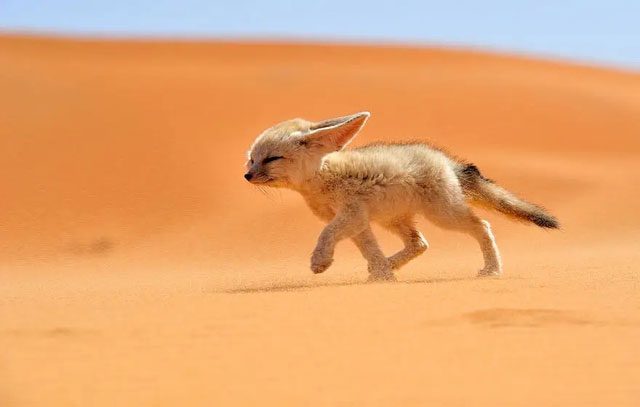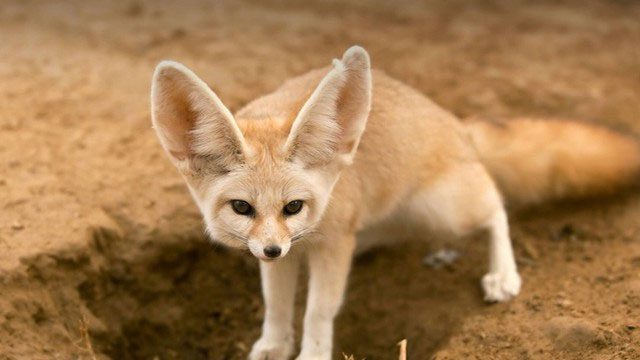The Sahara Desert covers about 6% of the Earth’s land. However, this vast and harsh environment is home to the Fennec Fox (desert fox), the smallest wild member of the Canidae family. This species has an incredible ability to survive in the desert without drinking water.
The desert fox has sandy-colored fur that helps it remain inconspicuous while it ventures out of its den in search of food. Additionally, this small creature often runs in a zigzag pattern, jumps, and uses sand dunes to conceal its position.
As night falls, the once warm sands that radiated heat during the day can become bitterly cold. Temperatures can drop sharply below freezing. Clearly, this sudden cold can be even more severe than the heat. However, thanks to the thick insulating fur of the desert fox, this animal can roam and hunt at night.

The desert fox can withstand the harsh living conditions of the desert. (Photo: Animalia).
Why does the desert fox not need to drink water?
In fact, the small body of the desert fox does not require much food. However, as an omnivore, it can gather various items found in the desert to satisfy its hunger, such as insects, berries, plant roots, or even food scraps.
The desert is extremely harsh; although there is food, there is little water. Fortunately, the kidneys of the desert fox function exceptionally well. It is the only member of the Canidae family that does not need to drink water. Instead, the desert fox can obtain all the necessary moisture from the food it consumes.
The desert fox has evolved since the desert first appeared. Thus, aside from them, no other canid species can withstand the challenges of the desert.
Despite being roughly the size of a walking boot and weighing about 1 kg, the desert fox thrives in the desert every day.
The Sahara contains millions of grains of sand, each acting like a radiator. In fact, sand absorbs heat, and the hotter it gets, the more heat it radiates. The average temperature in this desert can reach nearly 40 degrees Celsius.
In such extreme heat, the small size of the desert fox is advantageous. Its small body allows it to dissipate heat more quickly than larger bodies. Moreover, this animal’s fur is long, thick, and soft, with an undercoat that protects it from the daytime heat.


The large ears not only help the desert fox combat heat but also allow it to easily detect prey. (Photo: Misfitanimals).
Furthermore, to cool down even faster, the large ears function like sophisticated air conditioning units. Each ear of the desert fox contains a network of capillaries filled with blood that expands when the temperature rises rapidly.
Not only do the large ears significantly aid in heat regulation, but they also make the desert fox a formidable nocturnal “hunter.” Their keen hearing enables them to detect prey such as insects and reptiles in the dark.
Interestingly, the desert fox has another cooling method: it stays in burrows during the day. They are well-acquainted with their environment. Specifically, moisture often accumulates at the base of sand dunes, making the sand firm enough to dig burrows. To avoid the searing heat of the sun in the Sahara, the desert fox seeks refuge in its burrow and ventures out to hunt at night.


















































